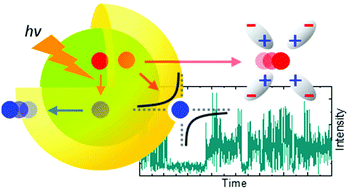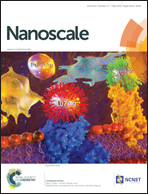Charge-tunnelling and self-trapping: common origins for blinking, grey-state emission and photoluminescence enhancement in semiconductor quantum dots†
Abstract
Understanding instabilities in the photoluminescence (PL) from light emitting materials is crucial to optimizing their performance for different applications. Semiconductor quantum dots (QDs) offer bright, size tunable emission, properties that are now being exploited in a broad range of developing technologies from displays and solar cells to biomaging and optical storage. However, instabilities such as photoluminescence intermittency, enhancement and bleaching of emission in these materials can be detrimental to their utility. Here, we report dielectric dependent blinking, intensity-“spikes” and low-level, “grey”-state emission, as well as PL enhancement in ZnS capped CdSe QDs; observations that we found consistent with a charge-tunnelling and self-trapping (CTST) description of exciton-dynamics on the QD–host system. In particular, modulation of PL in grey-states and PL enhancement are found to have a common origin in the equilibrium between exciton charge carrier core and surface-states within the CTST framework. Parameterized in terms of size and electrostatic properties of the QD and its nanoenvironment, the CTST offers predictive insight into exciton-dynamics in these nanomaterials.


 Please wait while we load your content...
Please wait while we load your content...